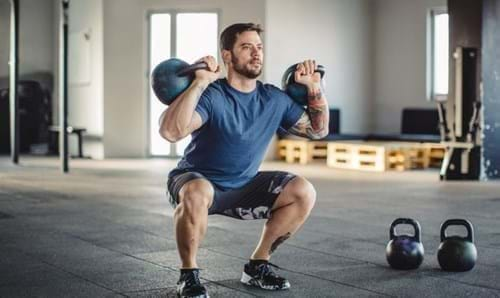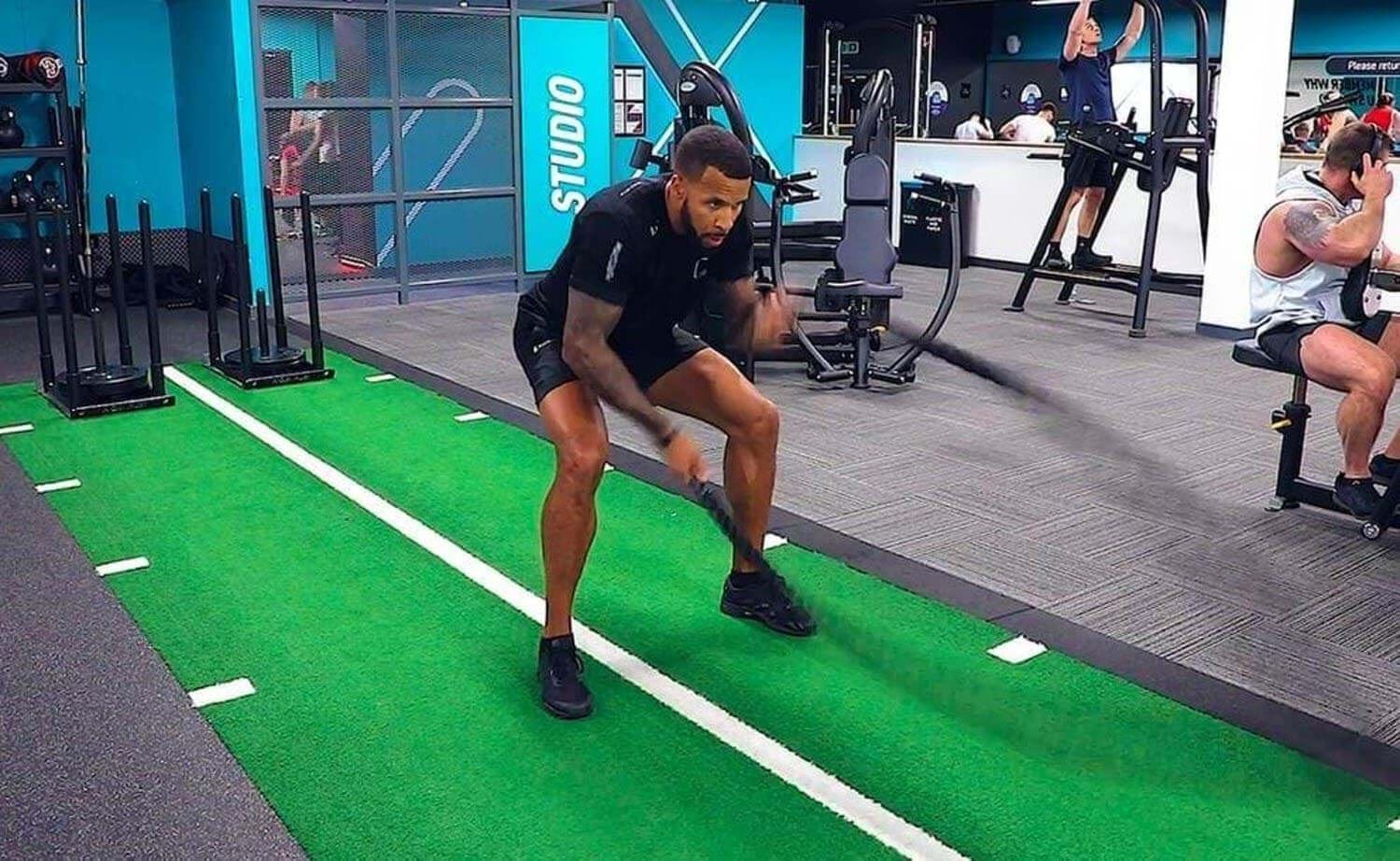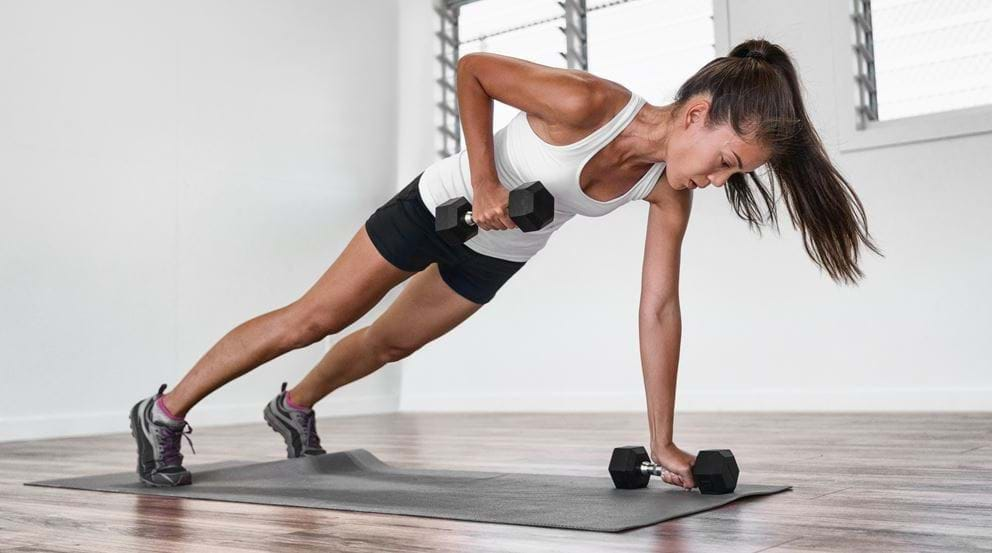What Type Of Strength Training Is Right For You?

For most people, lifting weights and strength training seem like the same thing—and for good reason! Over the years, the two have become pretty much interchangeable. But here’s the thing: they’re actually not the same! Weightlifting is just one style of strength training, and strength training itself comes in many different forms.
Each type of strength training has its own goals, benefits, and techniques. So, whether you're looking to build muscle, increase endurance, or just get stronger overall, there's a strength training method that’s perfect for you.
In this blog, we’re diving into six types of strength training, what they’re all about, who they’re best for, and how you can get started. Let’s break it down and find the right fit for your fitness journey!
What Is Strength Training?
At its core, strength training is all about pushing your muscles to work against resistance in order to build strength, muscle mass, and endurance.
Now, while lifting weights is the go-to for most people when they think of strength training, it's not the only way to challenge your muscles. There are plenty of other ways to create that resistance and boost your strength.
What Are the Benefits of Strength Training?
Strength training isn’t just about getting stronger—it’s also a game changer for both your physical and mental well-being. Check out some of the key benefits:
Higher Basal Metabolic Rate (BMR): This means you burn more calories even when you're resting, which makes it easier to stay in a calorie deficit if you're looking to lose weight!
Boosted energy levels: You'll find you have more stamina to tackle your daily activities without feeling drained.
Injury prevention: Strengthening muscles and joints can help protect you from everyday injuries.
Better bone health and density: Strength training helps keep your bones strong, which is especially important as you get older.
More muscle mass: Building muscle helps boost your metabolism and gives you a more toned appearance.
Improved flexibility and mobility: Regular strength training can help you move more freely and comfortably.
A better mood and mental health: Exercise in general is a mood booster, and strength training is no exception—it can help reduce stress and improve your overall mental well-being.
Why Are There Different Types of Strength Training?
The core idea behind strength training is simple: challenge your muscles to get stronger. While all forms of strength training follow this principle, the goals and results can vary pretty significantly depending on the method you choose.
Even though most people who strength train share similar goals, the different styles are tailored to meet more specific objectives.
Depending on your goals—whether it’s building muscle, getting stronger, or improving overall fitness—certain types of strength training might be a better fit for you. For example, both gymnasts and powerlifters are incredibly strong, but the type of strength they need is totally different. The strength required for gymnastics is not the same as what’s needed for powerlifting, so following the same workout routine wouldn't work for both.
Plus, some folks just prefer one style over another because it’s more fun! If you’re not sure what your specific goals are, choosing a type of strength training you actually enjoy can make it easier to stick with in the long run.
Does Strength Training Build Muscle?
The short answer: absolutely! Strength training is one of the most effective ways to build muscle mass. When you challenge your muscles with resistance—whether it’s lifting weights, using resistance bands, or just your body weight—you create tiny tears in your muscle fibers. As your body repairs these tears, it builds new muscle tissue, which leads to muscle growth and more strength.
That said, different types of strength training can focus on muscle building in different ways. For example, bodybuilding training zeroes in on hypertrophy (muscle growth) through higher volume and exercises that target specific muscle groups. On the other hand, powerlifting focuses on lifting the heaviest weights possible with fewer reps, which is great for building strength but not as effective for packing on muscle mass, even though it does boost overall strength.
Consistency and progressive overload (gradually increasing the challenge for your muscles over time) are crucial for maximizing muscle growth, no matter what type of strength training you’re doing. If you don’t keep pushing your muscles, you won’t see the muscle gains you’re hoping for.
Six Different Types of Gym Strength Training to Try
1. Bodybuilding
Bodybuilding is all about maximizing muscle size and cutting down on body fat to transform your body’s composition and hit aesthetic goals. This is achieved through exercises that focus on hypertrophy (muscle growth) and training volume, although strength also improves along the way.
In professional bodybuilding, competitors are judged on muscle mass, symmetry, and definition. Leading up to competitions, bodybuilders typically reduce their calories to shed fat and show off the muscle they've built. Some even cut back on water and carbs to make their muscles pop.
While competitive bodybuilding can get pretty extreme, the basic goal of body recomposition—building muscle and losing fat—is common for many gym-goers. In fact, a lot of typical strength training programs are designed to help increase muscle size and improve body composition.
Pros
Bodybuilding’s ultimate goal of body recomposition is perfect for anyone looking to gain muscle, lose fat, or do a combination of both! Plus, you don’t have to compete to get benefits from it.
Cons
When you’re prepping for a competition, bodybuilding can get intense. Cutting calories can lead to low energy, increased injury risk, and even health issues like eating disorders and hormonal imbalances.
2. Powerlifting
Powerlifting is all about raw strength. This strength sport tests your 1-rep max in three main lifts: the squat, deadlift, and bench press. The goal? Maximize your strength—not aesthetics.
In competitions, powerlifters get three attempts to lift the heaviest weight they can for each lift. Afterward, their highest successful lift in each event is added together to determine their total score. Though the competition focuses on three lifts, powerlifters train with a variety of exercises to build total body strength.
Pros
Powerlifting is great if you're focused on building serious strength without worrying about how you look. It involves lifting heavy weights with low reps—perfect for those who find high-volume workouts repetitive.
Cons
Because powerlifting involves pushing your body to the limit, it can lead to joint, muscle, and bone injuries if you're not careful with your form.
3. Calisthenics
Calisthenics uses bodyweight exercises like push-ups, squats, and muscle-ups to train your entire body. These full-body movements target large muscle groups, improve strength, and enhance flexibility, coordination, and balance.
It’s a great option for those who prefer skills-based training over aesthetics or pure power. Plus, calisthenics exercises often don’t require equipment, making them super accessible and easy to do anywhere.
Pros
Since calisthenics can be done with minimal equipment, it’s perfect for training on the go. The skill-based nature of the training keeps it fun and varied while improving your flexibility and stability.
Cons
Calisthenics can be tough! Progression is more challenging than simply adding weight, and you may plateau as you move to more advanced variations. Plus, many advanced exercises require good flexibility and mobility, which can be tough if you’re just starting out.
4. CrossFit
CrossFit is a high-intensity training program that combines strength and conditioning to improve power, muscle mass, endurance, and stamina. Workouts often involve functional movements like squats, cleans, and kettlebell swings, along with high reps, callisthenics, and even cardio.
CrossFit gyms are known for their supportive, community atmosphere. Many gyms post a “workout of the day” (WOD) for members to complete, making it a great way to stay motivated and push yourself harder.
Pros
CrossFit is constantly varied, which means you’ll never get bored. The intensity keeps you challenged and helps break through plateaus. Plus, it’s a killer way to improve your endurance and cardio fitness.
Cons
CrossFit can be expensive, especially if you’re training at a specialized gym. It also has a higher risk of injury due to the intense nature of the exercises and fast pace.
5. Olympic Lifting
If you’ve ever watched the Summer Olympics, you’re probably familiar with Olympic lifting. In competition, athletes must lift a loaded barbell from the ground to overhead using two official moves: the snatch and the clean and jerk.
Olympic lifters also use additional movements in training, like power cleans and front squats, to build strength and perfect their technique.
Pros
Olympic lifting is perfect for those who love mastering technical movements that require power and precision. It’s also a great way to build explosive strength and even improve your cardiovascular health when added to HIIT workouts.
Cons
This type of lifting is for advanced gym-goers. The technical complexity and heavy weights involved mean it's not for beginners, and trying to jump in too soon can result in serious injuries.
6. Plyometrics
Looking to develop explosive power? Plyometrics is your best bet. This style of training uses fast, explosive movements—like box jumps, burpees, and lunge knee-ups—to build strength, speed, and endurance.
Plyometrics is perfect for athletes who play fast-paced sports like football, basketball, or rugby. The quick movements help improve your power and agility, while also benefiting your cardiovascular health.
Pros
Plyometrics is a dynamic, exciting way to train. It builds full-body strength, power, and cardiovascular endurance while improving muscle agility and speed.
Cons
Plyometric exercises are high-impact and can put a lot of stress on your joints, so they’re not ideal if you're prone to joint pain or recovering from an injury. They also require a lot of energy, and maintaining a high volume of training can be tough.
Do I Have to Stick to One Style of Strength Training?
Some people find a single style of strength training that works for them, while others prefer to mix it up. If you’re not sold on any of these specific styles and want to stick with your usual routine, that’s totally cool!
The key is to listen to your body and choose exercises you actually enjoy and can stay consistent with!
But, if you’re feeling inspired to try something new after reading this, why not experiment with a few different styles? For example, you could focus on Olympic lifts and accessory moves in one workout, try calisthenics the next, and then go for plyometrics another day. You could even combine all three styles into one workout by mixing in a few exercises from each.
If you're just getting started with strength training, it’s a good idea to first master your form and build up your strength with basic resistance exercises. Focus on movements like squats, deadlifts, chest presses, shoulder presses, and rows. Use a mix of free weights, cable machines, and fixed weight machines to build strength and muscle mass. This solid foundation will help you avoid injury and improve your performance when you tackle those more specialized training styles.
Don’t forget, you can also add in workouts that target cardiovascular health, mobility, and coordination to get the best overall results.
Ready to get stronger? Find the nearest gym to you here.


